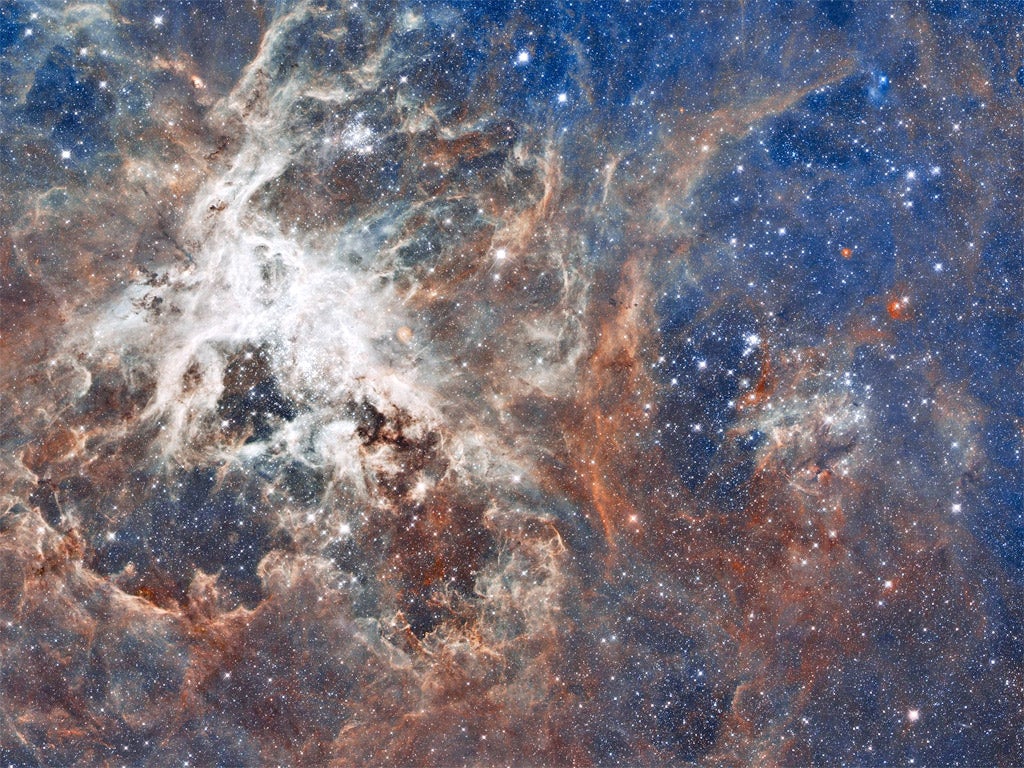Watch this space: the birthplace of a billion stars

This breeding ground for new stars, captured as never before by the Hubble Space Telescope, is in the heart of the Tarantula nebula some 170,000 light-years away in the Large Magellanic Cloud – a small satellite galaxy of our own Milky Way.
It is the largest mosaic of images collated from a series of photographs captured by the two cameras on board the telescope.
The region of 30 Doradus is the brightest stellar birthplace in our galactic neighbourhood and is home to the most massive stars known to exist. The image reveals the different stages in the birth and early evolution of stars, which appear in clusters ranging in age from 2 million to 25 million years. Some seen here are embryonic stars just a few thousand years old and still wrapped in cocoons of dark gas, while others are giant behemoths that die young in supernova explosions.
The region's sparkling centrepiece is a giant young cluster named NGC 2070, which contains about 500,000 stars and is only about 2 million to 3 million years old.
The image was composed from 30 separate fields, 15 from each camera on board the Hubble telescope. Both cameras made these observations simultaneously in October 2011. The red colour represents hydrogen gas, while the blue represents oxygen.
Subscribe to Independent Premium to bookmark this article
Want to bookmark your favourite articles and stories to read or reference later? Start your Independent Premium subscription today.

Join our commenting forum
Join thought-provoking conversations, follow other Independent readers and see their replies